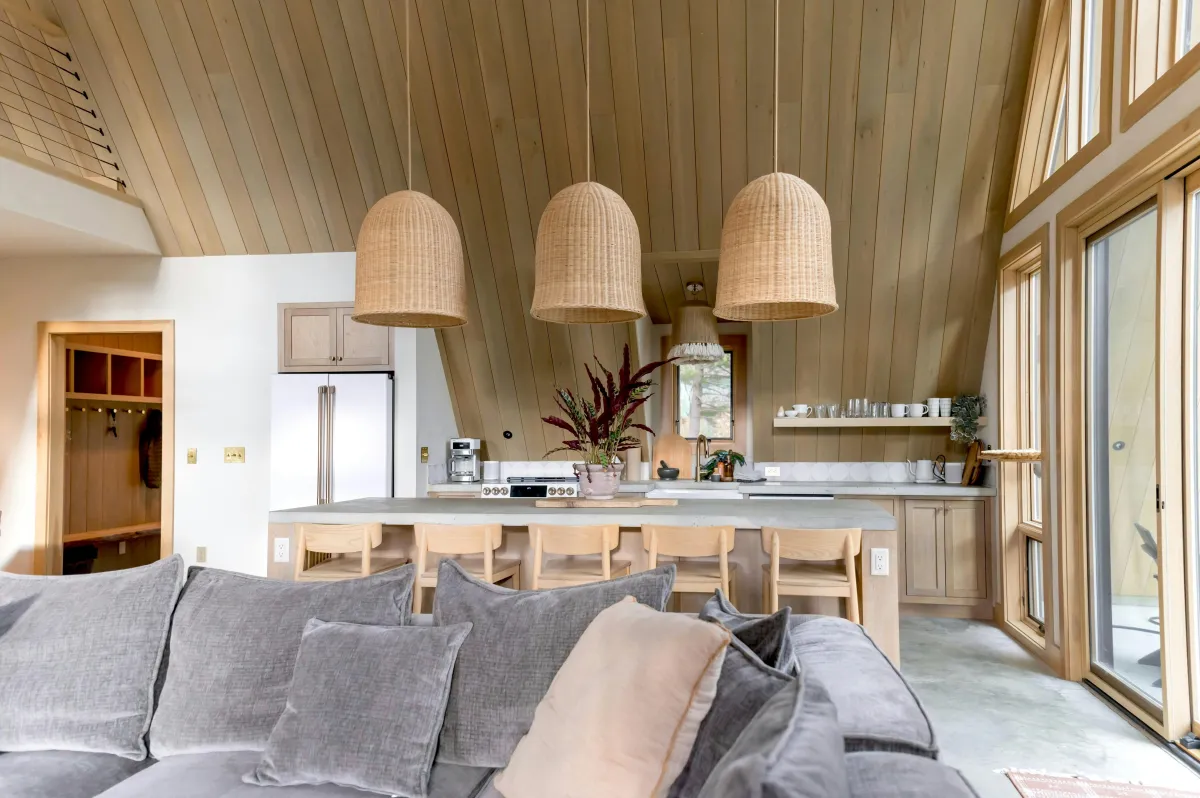OUR RECENT POSTS

Incorporating Smart Lighting Solutions into Your Home
Smart lighting is a game-changer in home design, offering convenience, energy efficiency, and the ability to transform your living space with a tap on your smartphone or a voice command. Whether you’re creating a cozy ambiance in your living room, setting the mood for a dinner party, or enhancing your home’s security, smart lighting solutions can elevate your home to a new level of functionality and style. Here’s how to seamlessly integrate smart lighting into your home.
1. What Is Smart Lighting?
Smart lighting refers to advanced lighting systems that connect to your home’s Wi-Fi or smart hub, allowing you to control your lights remotely via a smartphone app or smart assistant like Amazon Alexa, Google Assistant, or Apple HomeKit. These systems often come with features such as:
Dimmable Lights: Adjust brightness levels to suit your needs.
Color Changes: Switch between warm and cool tones or explore a spectrum of colors.
Scheduling: Automate lights to turn on and off at specific times.
Motion Sensors: Automatically illuminate spaces as you move.
Energy Monitoring: Track and reduce energy consumption.
2. Benefits of Smart Lighting
Convenience: Control your lights from anywhere, whether you’re at home or away.
Energy Efficiency: Save energy with LEDs and automated settings that reduce unnecessary usage.
Enhanced Security: Use timers or motion sensors to deter potential intruders.
Customizable Ambiance: Tailor lighting to your activities, from work to relaxation.
Future-Proofing: Smart lighting integrates with other smart home devices, creating a cohesive ecosystem.
3. Types of Smart Lighting Solutions
Smart Bulbs: Replace traditional bulbs with Wi-Fi-enabled options that fit into existing fixtures. Popular choices include Philips Hue, LIFX, and TP-Link Kasa.
Smart Switches and Dimmers: Upgrade your wall switches for full-room lighting control. These are ideal for spaces with multiple light fixtures.
Smart Light Strips: Add LED strips under cabinets, behind TVs, or along pathways for creative accents.
Outdoor Smart Lights: Enhance your garden, patio, or driveway with weather-resistant smart lighting.
4. Planning Your Smart Lighting Setup
Before you dive into installation, consider these factors:
Purpose of Each Room: Determine the mood or functionality you want for each space.
Compatibility: Ensure the smart lighting products you choose are compatible with your existing smart home system.
Wi-Fi Coverage: Strong Wi-Fi is essential for seamless operation; consider adding a mesh system if needed.
Budget: Start small with a few bulbs or switches and expand as your needs grow.
5. Smart Lighting Ideas for Different Spaces
Living Room:
Install dimmable bulbs for movie nights or relaxing evenings.
Use color-changing bulbs to set festive or seasonal moods.
Bedroom:
Program lights to gradually brighten in the morning, simulating a sunrise.
Use warm lighting for a cozy and calming atmosphere.
Kitchen:
Add smart light strips under cabinets for task lighting.
Use brighter, cooler tones for cooking and warm tones for dining.
Bathroom:
Motion-activated lights offer convenience during nighttime visits.
Use color-changing options to create a spa-like ambiance.
Outdoor Spaces:
Install smart spotlights to highlight landscaping or architectural features.
Use motion-activated floodlights for added security.
6. Enhancing Your Home with Smart Lighting Features
Scenes and Routines:
Group multiple lights into “scenes” for specific activities like reading, hosting, or relaxing.
Example: Set a “Goodnight” scene to turn off all lights except a dim path to your bedroom.Voice Control:
Pair lights with a smart assistant to control them hands-free.
Example: “Alexa, dim the living room lights to 50%.”Geofencing:
Automate lights to turn on when you arrive home or off when you leave.Energy Tracking:
Monitor how much energy your lights consume and adjust settings to save power.
7. Choosing the Right Ecosystem
Selecting the right smart lighting system depends on your needs and preferences. Here are some popular options:
Philips Hue: Known for its extensive ecosystem and compatibility with multiple platforms.
LIFX: Offers vibrant colors and operates without a hub.
TP-Link Kasa: Budget-friendly options with reliable performance.
Nanoleaf: Focused on decorative lighting with modular designs.
8. Installation Tips
Start with a single room to familiarize yourself with the system.
Follow manufacturer instructions for pairing devices with your Wi-Fi or smart hub.
If you’re installing smart switches, consider hiring a professional for electrical work.
9. Keeping Smart Lighting Secure
As with any connected device, smart lighting requires secure configurations to prevent unauthorized access:
Use strong, unique passwords for your smart home accounts.
Keep your smart lighting apps and firmware updated.
Create a separate network for your smart devices to minimize security risks.
10. Future Trends in Smart Lighting
The smart lighting industry is evolving rapidly, with trends like:
Adaptive Lighting: Automatically adjusts color temperature based on the time of day.
Integration with AI: Intelligent systems that learn your habits and optimize lighting accordingly.
Sustainability: Increased use of energy-efficient and eco-friendly materials.
Incorporating smart lighting into your home is an excellent way to enhance its functionality, comfort, and style. With a wide range of options and features available, you can tailor your lighting to suit every room and activity. Whether you’re upgrading a single bulb or creating a fully integrated system, smart lighting makes life brighter and more convenient.
